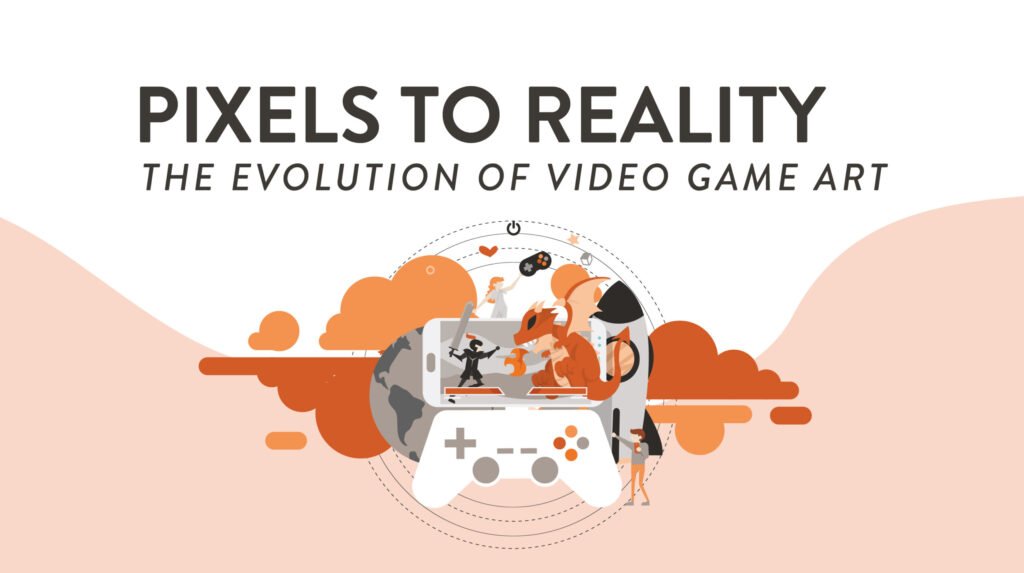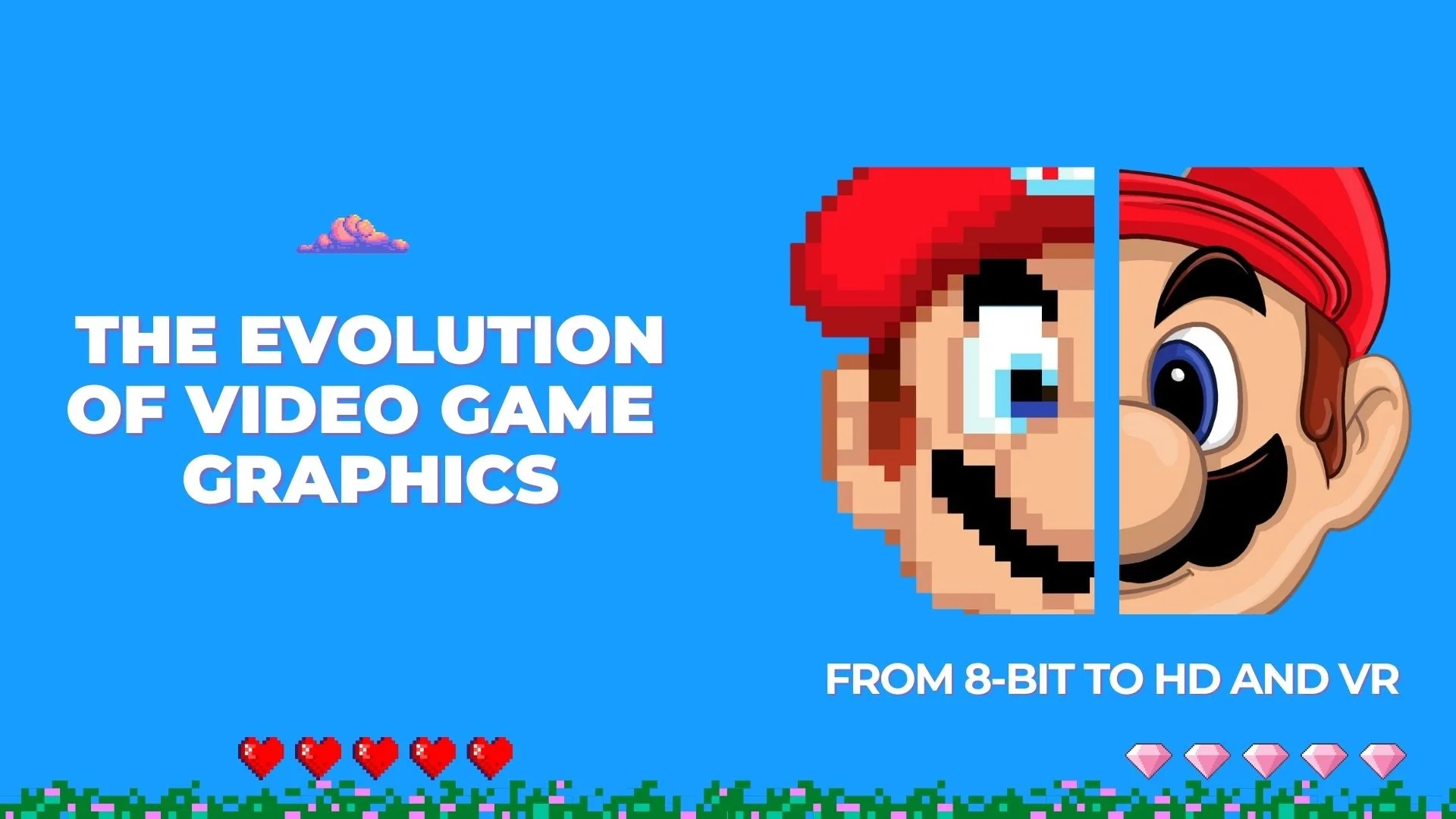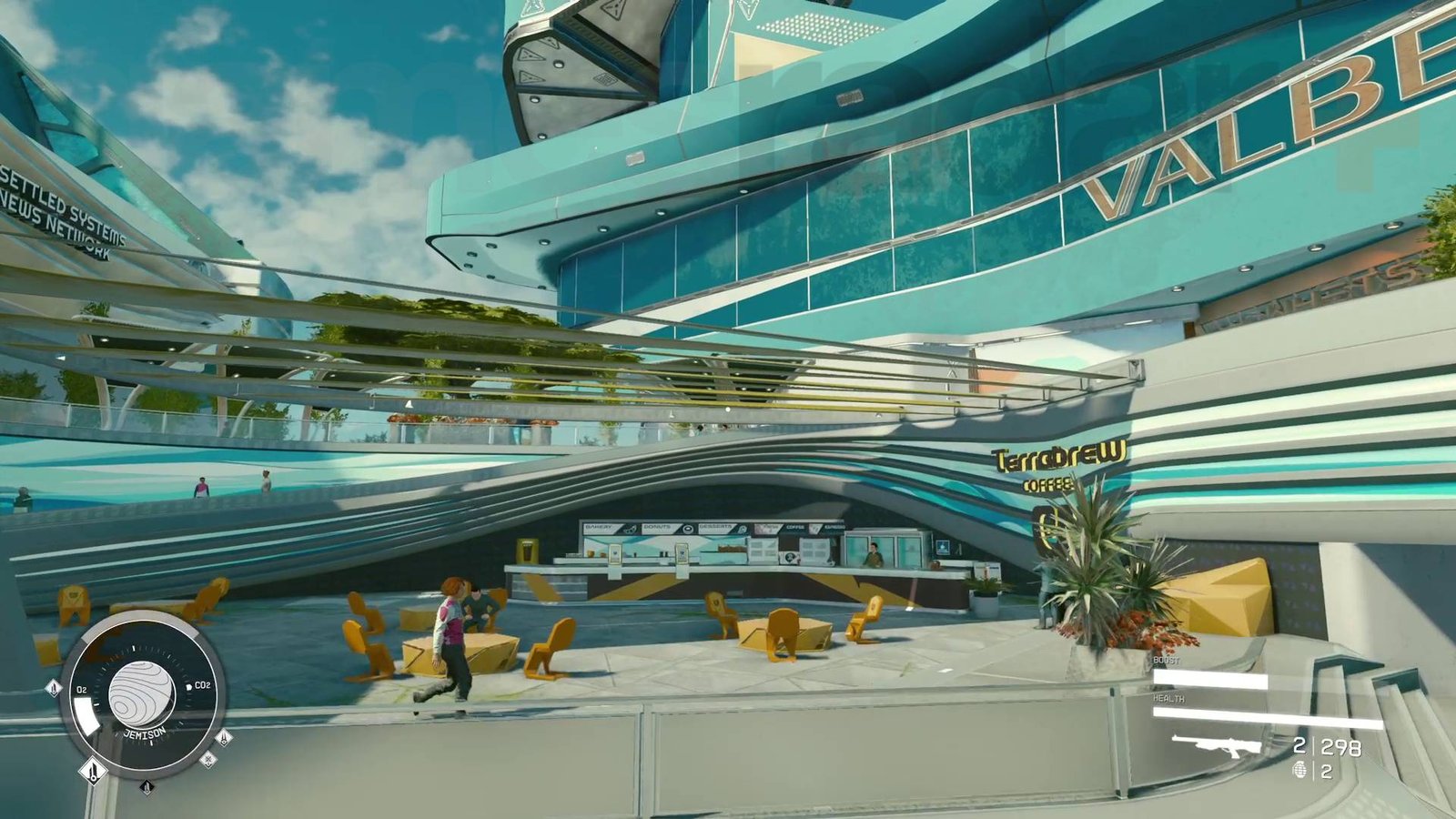Video games have undergone a stunning transformation in visual presentation over the decades. From the humble beginnings of 8-bit graphics to today’s hyper-realistic environments, the evolution of video game graphics reflects the advancement of technology and the endless creativity of developers.
The Early Days: 8-Bit Graphics
The 8-bit era brought iconic consoles like the Nintendo Entertainment System (NES) and games such as Super Mario Bros. These early games relied on limited pixel art and basic color palettes, offering a nostalgic charm that remains beloved today.
The Leap to 16-Bit
With the advent of 16-bit consoles like the Super Nintendo Entertainment System (SNES), games could display more colors, smoother animations, and larger sprites. Classics like Street Fighter II and Donkey Kong Country set new standards in visual storytelling and gameplay.
Enter the 3D Era
The 1990s saw a seismic shift as developers embraced 3D graphics. Consoles like the Sony PlayStation and Nintendo 64 introduced players to polygonal worlds in games like Super Mario 64 and Tomb Raider. This period marked the birth of immersive environments and cinematic gameplay.
High-Definition Revolution
The 2000s ushered in HD gaming, powered by consoles like the Xbox 360 and PlayStation 3. Titles such as Gears of War and Uncharted leveraged advanced textures, lighting, and physics to create lifelike experiences, bringing cinematic quality to gaming.
The Current Era: Realism Redefined
Modern gaming, driven by hardware like the PlayStation 5, Xbox Series X, and high-end PCs, achieves stunning realism through technologies like ray tracing, 4K resolution, and high dynamic range (HDR). Games such as Red Dead Redemption 2 and Cyberpunk 2077 showcase intricate details, realistic lighting, and lifelike animations that elevate immersion to new heights.

The Role of Graphics Engines
Innovative engines like Unreal Engine and Unity have been pivotal in this evolution. These tools enable developers to craft visually stunning games while optimizing for diverse platforms, democratizing the creation of high-quality visuals.
Looking Ahead: The Future of Game Graphics
The future holds exciting possibilities with advances in AI-driven procedural graphics, virtual reality (VR), and augmented reality (AR). As technology progresses, gamers can expect hyper-immersive experiences that challenge the boundaries of reality.
Conclusion
From pixelated beginnings to photorealistic worlds, the journey of video game graphics is a testament to innovation and creativity. Each milestone enhances our ability to connect with virtual worlds, turning games into a powerful form of interactive art.











